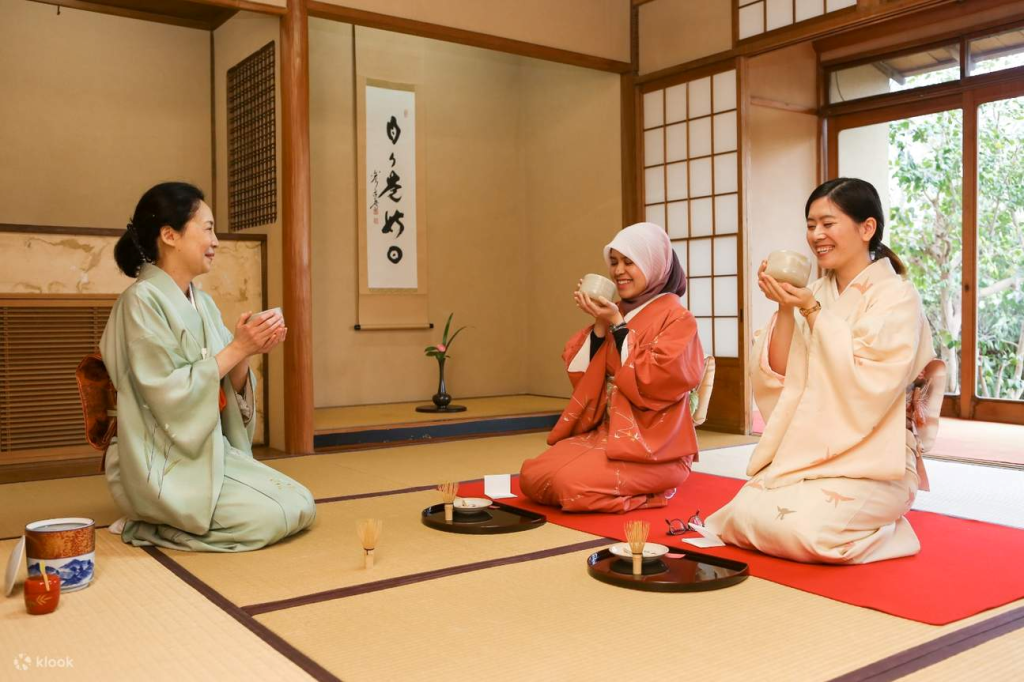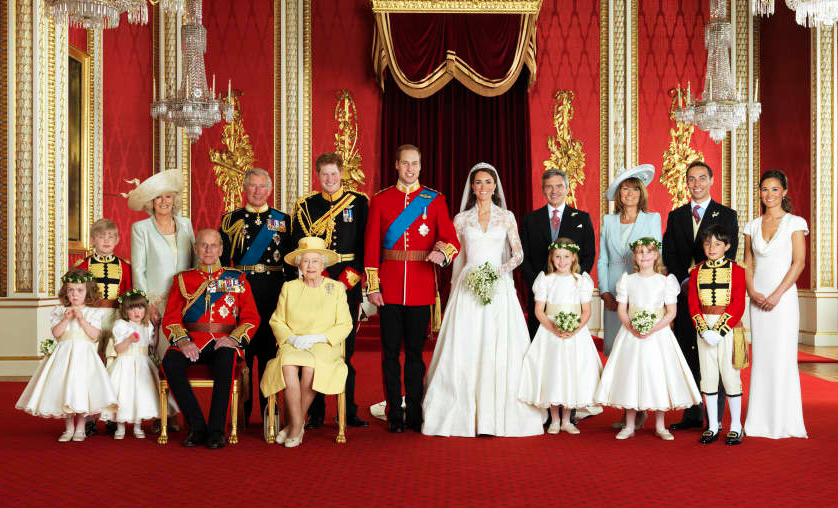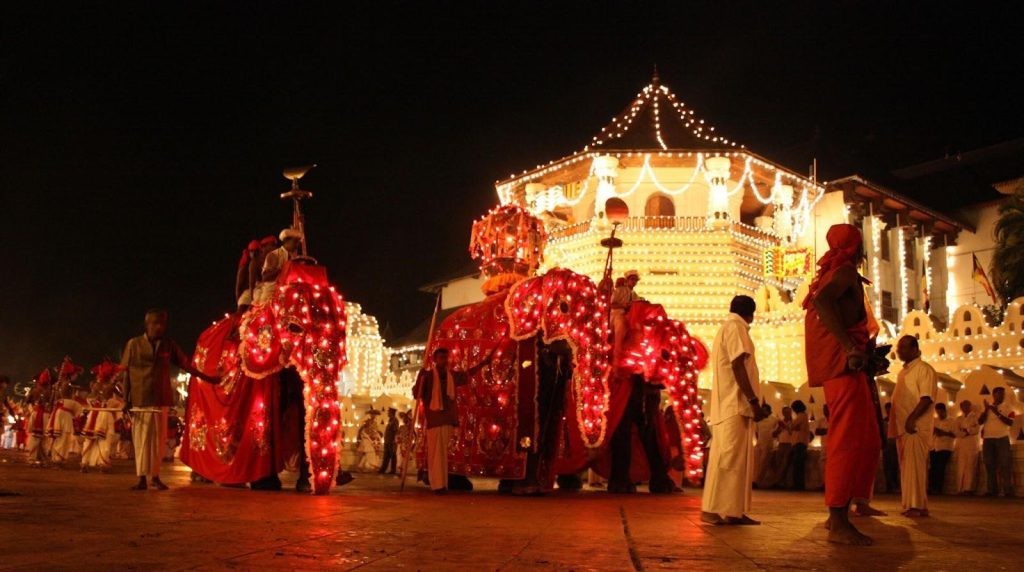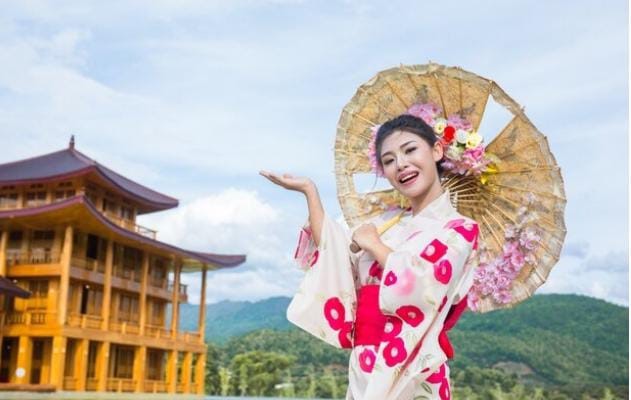The Maldives is an island nation located in the Indian Ocean, southwest of India and Sri Lanka. The history of the Maldives dates back over 2,500 years, with the islands being inhabited by various groups including Buddhist and Hindu settlers. However, the Maldives eventually became an Islamic nation, and Islam has been the official religion since the 12th century. (Hussain, 2018)
One of the most significant events in the history of the Maldives was the arrival of Arab traders in the 12th century, which brought Islam to the islands. The first known Muslim ruler of the Maldives was King Dhovemi, who converted to Islam in 1153. Since then, the Maldives has been ruled by a series of sultanates and dynasties, with the power shifting between them over time. (Hussain, 2018)
In 1887, the Maldives became a protectorate of the British Empire, which provided protection against other colonial powers in the region. However, the Maldives remained largely autonomous, and its internal affairs were left to be governed by its own sultans. (Hussain, 2018)
In 1953, the Maldives gained independence from the British Empire, but it was short-lived. In 1959, a coup d’etat led by Ibrahim Nasir overthrew the ruling sultanate and established a republic. Nasir ruled the Maldives until 1978, during which time the country underwent significant modernization and development. (Hussain, 2018)
In 1978, Maumoon Abdul Gayoom became the president of the Maldives and remained in power until 2008, making him one of the longest-serving leaders in the world. During his presidency, Gayoom implemented policies that aimed to modernize the country while preserving its cultural heritage. However, his regime was also criticized for its authoritarian nature and human rights abuses. (Shah, 2021)
In 2008, the Maldives held its first democratic presidential election, which was won by Mohamed Nasheed, a former political prisoner who had been jailed for his pro-democracy activism. Nasheed’s presidency was marked by significant progress in human rights and democratization, but it was also characterized by political instability and challenges to his authority. In 2012, Nasheed was ousted in a coup, and his successor, Mohamed Waheed Hassan, ruled the Maldives until 2013, when Abdulla Yameen was elected president. (Shah, 2021)
Under Yameen’s presidency, the Maldives faced allegations of corruption and human rights abuses, and the country became increasingly isolated from the international community. However, in 2018, Ibrahim Mohamed Solih was elected president, and his government has been working to improve the country’s human rights record and strengthen its ties with other nations. (Shah, 2021)
In conclusion, the history of the Maldives is marked by a series of political and cultural changes, from the arrival of Islam to British colonization and the establishment of a republic. Despite the challenges and controversies that have marked its history, the Maldives remains an important cultural and economic hub in the Indian Ocean region.
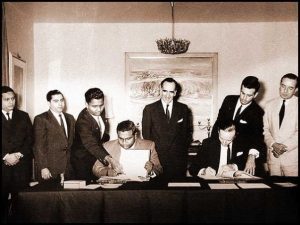
Location
The Maldives is an island nation situated in the Indian Ocean. It is composed of 26 atolls, which are made up of over 1,190 coral islands. The Maldives is located approximately 400 miles southwest of the southern tip of India and 500 miles west of Sri Lanka (CIA World Factbook, 2021). The country’s unique geography, with its low-lying islands and atolls, makes it vulnerable to rising sea levels and climate change.
The Maldives is located between latitudes 1° S and 8° N and longitudes 72° and 74° E (World Atlas, 2021). The country is surrounded by the Indian Ocean, with the Arabian Sea to the west and the Bay of Bengal to the east. It has a total land area of approximately 298 square kilometers (CIA World Factbook, 2021). However, the Maldives also has an Exclusive Economic Zone (EEZ) of approximately 923,322 square kilometers, which is larger than its land area (Ministry of Foreign Affairs, Maldives, n.d.).
The capital and largest city of the Maldives is Male, which is located on the southern edge of North Male Atoll (World Atlas, 2021). Male is situated on a small island, just 2.2 square kilometers in size (CIA World Factbook, 2021). It is home to the Maldives’ major government offices, businesses, and transportation hubs, including Velana International Airport, the country’s main airport.
In conclusion, the Maldives is a small island nation located in the Indian Ocean between India and Sri Lanka. It is composed of 26 atolls, over 1,190 coral islands, and has a total land area of approximately 298 square kilometers. The country’s capital and largest city is Male, which is situated on the southern edge of North Male Atoll. The Maldives’ unique geography makes it vulnerable to rising sea levels and climate change, which is a major concern for the country’s future.
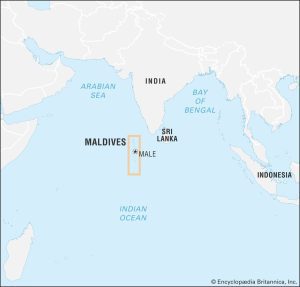
Climate
The Maldives is a small island nation located in the Indian Ocean, known for its pristine beaches, turquoise waters, and luxury resorts. The climate of the Maldives is tropical, with two distinct seasons: the dry season and the wet season. According to the Köppen-Geiger classification, the Maldives has a tropical monsoon climate (Am), with temperatures ranging from 25°C to 32°C throughout the year (Peiris et al., 2015).
The dry season in the Maldives runs from December to April, with lower humidity levels and very little rainfall. During this time, the weather is generally sunny and warm, making it the perfect time for tourists to visit the islands (Peiris et al., 2015). However, temperatures can reach up to 35°C, and the humidity levels can be high, making it uncomfortable for some visitors.
On the other hand, the wet season in the Maldives runs from May to November, with higher humidity levels and more rainfall. During this time, the Maldives experience occasional heavy rain showers and thunderstorms, but the weather is still warm and pleasant (Peiris et al., 2015). The sea can also be rough, making it difficult for some water activities. However, this is the best time for surfers to visit the Maldives, as the waves are at their best during this season.
The Maldives is also affected by the Asian monsoon system, which brings heavy rains and strong winds from the southwest during the wet season (Peiris et al., 2015). These monsoon winds have a significant impact on the weather patterns of the Maldives, and they can cause occasional flooding in some parts of the islands.
In recent years, the Maldives has also been affected by climate change, with rising sea levels and increasing temperatures. According to the Intergovernmental Panel on Climate Change (IPCC), the sea level in the Maldives is expected to rise by 0.5 to 1 meter by the end of the century, which would have a significant impact on the islands and their inhabitants (IPCC, 2019). The rising sea levels could cause flooding and erosion of the islands, and they could also contaminate the freshwater resources, making them unsuitable for consumption.
In conclusion, the climate of the Maldives is tropical, with two distinct seasons: the dry season and the wet season. The dry season runs from December to April, while the wet season runs from May to November. The Maldives is also affected by the Asian monsoon system, and it is facing the challenges of climate change, including rising sea levels and increasing temperatures.
Languages
The Maldives is a South Asian island country located in the Indian Ocean. The official language of the Maldives is Dhivehi, which is also known as Divehi or Maldivian. Dhivehi is an Indo-Aryan language that is closely related to Sinhalese and has similarities with Hindi, Arabic, and Urdu. The language is written in a script called Thaana, which is unique to the Maldives and is written from right to left.
According to the Ethnologue, there are approximately 330,000 speakers of Dhivehi worldwide. The majority of speakers are in the Maldives, where Dhivehi is the national language and the language of instruction in schools. Dhivehi is also spoken by the Maldivian diaspora in countries such as Sri Lanka, India, and the United Kingdom.
In addition to Dhivehi, there are also several other languages spoken in the Maldives. These include English, which is widely spoken as a second language, and languages spoken by the various expatriate communities in the country, such as Bengali, Hindi, and Tamil.
The Maldives has a rich linguistic history, with influences from various languages over the centuries. The Arabic language has had a significant influence on Dhivehi, particularly in terms of loanwords and religious vocabulary. In addition, there have been influences from Persian, Portuguese, and Dutch due to historical contacts with these cultures.
The Maldives is also home to the Maldivian Sign Language (MSL), which is a sign language used by the deaf community in the country. MSL is not related to Dhivehi and is a distinct language in its own right.
In conclusion, the Maldives is a multilingual country with Dhivehi as the official language. In addition to Dhivehi, there are several other languages spoken in the country, including English and languages spoken by expatriate communities. The Maldives’ linguistic history is rich and complex, with influences from various languages over the centuries. The country is also home to the Maldivian Sign Language, which is a distinct language used by the deaf community.

